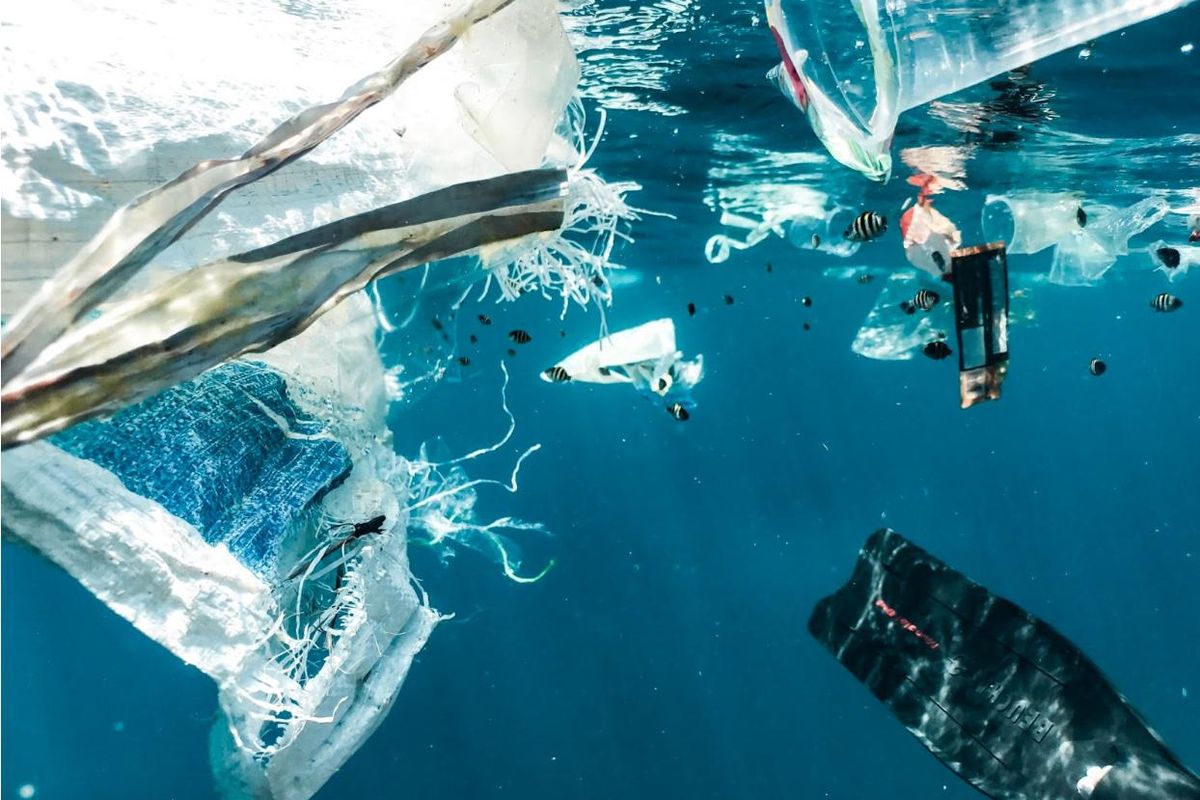
“Life finds a way” might be a line from a movie, but it’s the perfect way to describe the very real resilience of nature.
Take for example an enormous 620,000 square mile build-up of trash floating in the ocean between California and Hawaii, which has miraculously become a floating home to a myriad of sea creatures, otherwise known as the Great Pacific Garbage Patch.
Swirling ocean currents called gyres act as whirlpools sucking in piles and piles of litter into condensed areas, and the debris collects in patches in the center of the gyre. Though there are five of these garbage patches across the globe, the Great Pacific Garbage Patch—made of trash from countries in Asia and North and South America—contains the most plastic, according to USA Today.
In a new study published in the “Nature Ecology & Evolution Journal,” a team of researchers revealed that dozens of species of invertebrate organisms that normally dwell on coastlines had been able to survive and reproduce on the floating garbage. Animals like crustaceans, sea anemones, mollusks and worms, oh my! Fishing nets, which make up nearly half of the Great Pacific Garbage Patch, held the highest diversity of these coastal critters.
Scientists say the giant Pacific Garbage Patch has become a floating habitat for marine animals. pic.twitter.com/LRTBhlQli0
— USA TODAY (@USATODAY) December 21, 2021
“It was surprising to see how frequent the coastal species were,” Linsey Haram, a science fellow at the National Institute of Food and Agriculture and the study’s lead author, told CNN. “They were on 70% of the debris that we found.”
Creatures already known to live in the open ocean were also thriving on the plastic garbage, Haram told NPR. And more often than not, researchers saw the unlikely neighbors living together on the same piece of trash, with diversity of all organisms being highest on rope.
Of course, the findings of the study highlight possible negative consequences. Not only are the two species competing for food and space (and likely eating each other), there’s risk of these coastal animals becoming invasive species, as more and more learn to travel on wayward debris.
This is why, despite how nature is nature-ing, a huge overhaul of plastic use on multiple levels is still crucial. Another study published in March 2023 said that without urgent policy action, the rate at which plastics enter aquatic environments could increase by around 2.6 times between 2016 and 2040.
Luckily, actions are being taken. The UN Environment Assembly passed a landmark resolution in 2022 to end plastic pollution and create the world’s first global plastic pollution treaty by 2024. The agreement would address the full life cycle of plastic, from its production and design to its disposal.
Elsewhere, organizations have come up with innovative strategies for large scale trash collection. The Ocean Cleanup, for example, has created a net-like barrier known as a trash fence that acts as a trash collecting dam, preventing debris from moving from rivers to the ocean in the first place.
Animals clearly have a knack for evolving and adapting to help their species overcome. Hopefully, we humans can take a page from their book and make necessary changes in order to survive.
